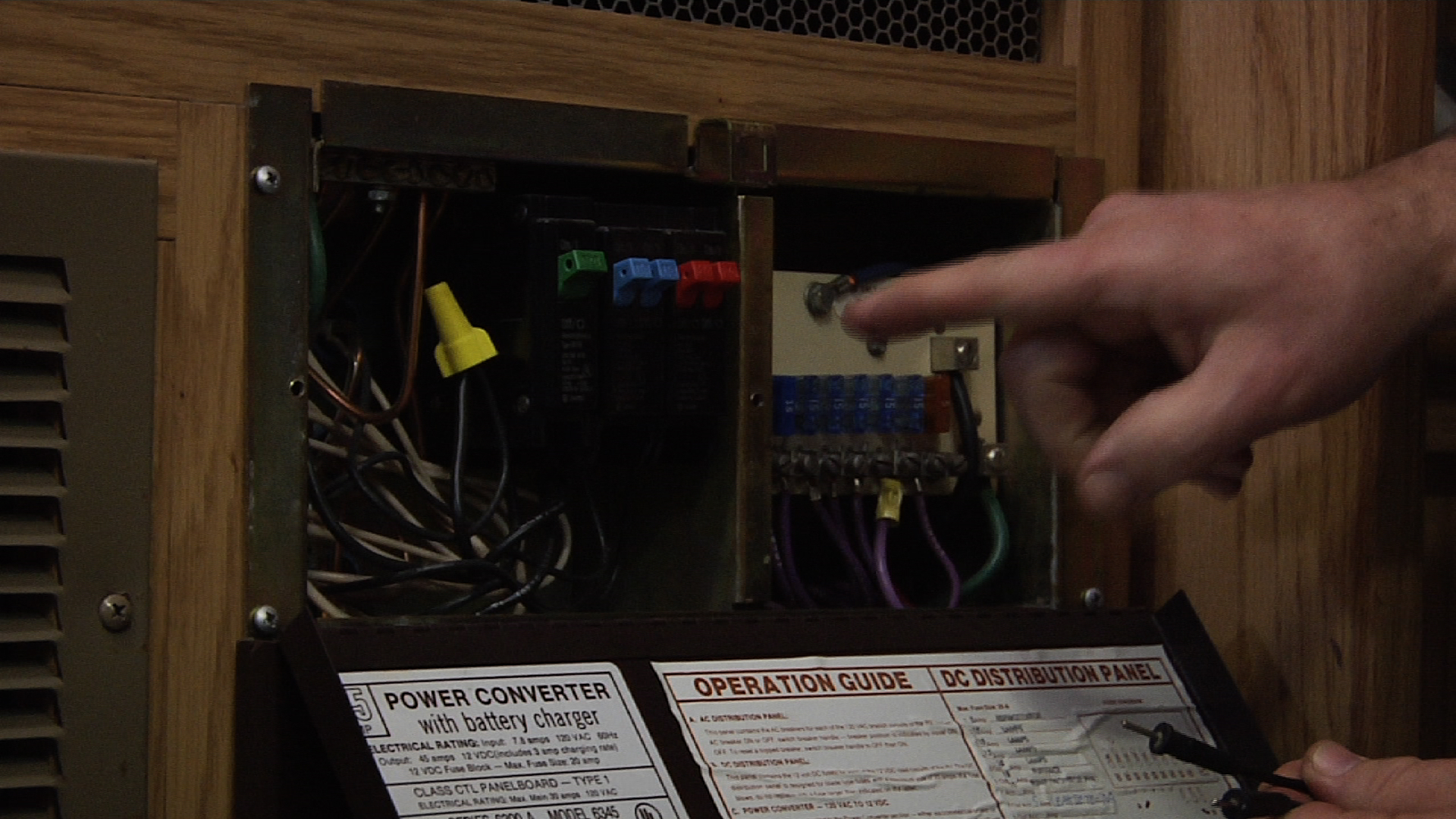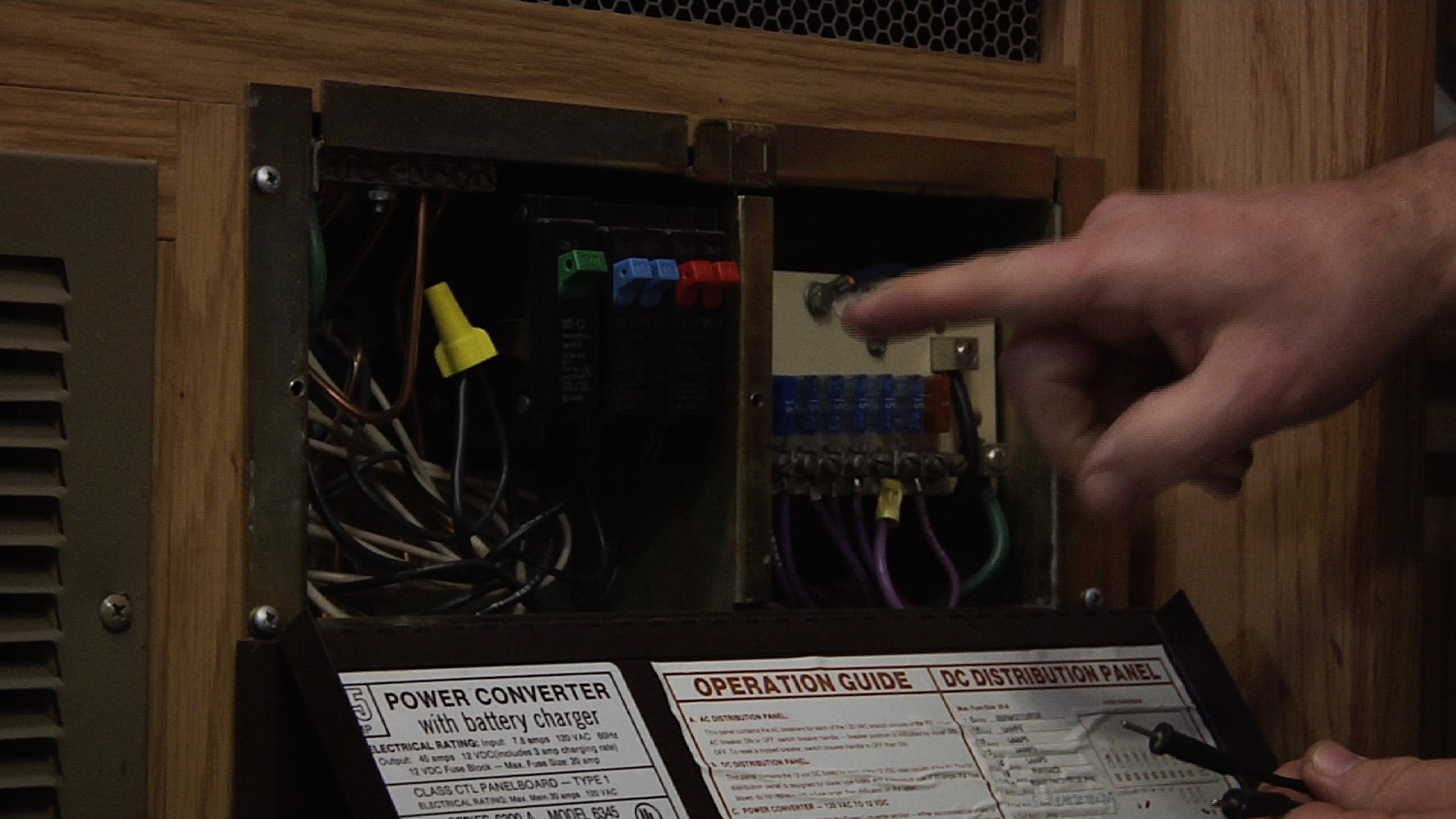Fleetwood RV battery wiring involves connecting the battery to the RV’s electrical system. Proper wiring is essential to ensure efficient power distribution.
When setting up Fleetwood RV battery wiring, it is crucial to follow the manufacturer’s guidelines for the specific RV model to prevent electrical issues or damage. RV batteries are a vital component of the vehicle’s electrical system, supplying power for appliances and devices while off-grid.
Understanding how to wire the batteries correctly can enhance efficiency and longevity. In this guide, we will delve deeper into the specifics of Fleetwood RV battery wiring, offering insights and tips for a successful installation process. Whether you are a newbie or an experienced RVer, having a grasp of the battery wiring fundamentals is essential for a smooth and enjoyable camping experience.


Credit: www.amazon.com
Understanding Rv Battery Systems
Types Of Rv Batteries
RVs typically use Lead-Acid, AGM, or Lithium batteries to power their electrical systems.
- Lead-Acid Battery: Common and cost-effective, but require regular maintenance.
- AGM Battery: Absorbent Glass Mat design, no maintenance required, better performance.
- Lithium Battery: Lightweight, longer lifespan, fast charging, but higher upfront cost.
Basic Components Of An Rv Battery System
An RV battery system includes batteries, inverter, converter, and monitoring system.
- Batteries: Store and supply power.
- Inverter: Converts DC to AC power for appliances.
- Converter: Charges batteries when connected to shore power.
- Monitoring System: Tracks battery levels and overall system performance.
Wiring Setup And Configuration
In Fleetwood RV battery wiring, the setup and configuration play a crucial role in ensuring a safe and efficient electrical system. Proper planning is essential to organize the wiring layout effectively.
Planning The Wiring Layout
Start by determining the location of the batteries and main components to create a clear wiring layout. This helps in identifying the shortest and safest routes for cables.
Proper Sizing Of Cables And Fuses
Ensure the cables used are appropriately sized to handle the current flow without overheating. Use a wire gauge chart to select the right cable size for different components. Additionally, install fuses to protect the system from overload.
Battery Isolation And Charging
Battery isolation and charging are crucial aspects of maintaining and optimizing the performance of your Fleetwood RV. Implementing proper battery isolation and choosing the right charging system are vital for the longevity and efficiency of your RV batteries.
Implementing Battery Isolation
Properly implementing battery isolation in your Fleetwood RV ensures that the various power sources are isolated from each other, preventing any imbalance or excessive drain on the batteries. Battery isolation is achieved through the use of various isolator devices and wiring configurations.
| Benefits of Battery Isolation |
|---|
| Prevents excessive battery drain |
| Ensures optimal battery performance |
| Minimizes the risk of electrical issues |
Choosing The Right Charging System
The choice of a charging system is crucial to ensure that your Fleetwood RV batteries are charged efficiently and effectively. The right charging system will provide the optimal charging voltage and current to maintain the battery’s health and extend its lifespan.
Factors to Consider when Selecting a Charging System
- The type and capacity of your RV batteries
- The power source available (e.g., shore power, solar panels, generator)
- The charging requirements of your RV’s electrical appliances and accessories
- The charging time required to fully charge the batteries
It is essential to choose a charging system that matches the specific requirements of your Fleetwood RV’s batteries, ensuring that it provides the necessary voltage and current for optimal charging performance. This will help prevent undercharging or overcharging, which can significantly impact the lifespan and performance of the batteries.
Tips for Choosing a Reliable Charging System
- Consult your RV manufacturer or a trusted expert for recommendations
- Ensure compatibility with your RV’s electrical system
- Consider the availability and accessibility of charging sources during your RV trips
- Take into account the ease of use and monitoring features of the charging system
By carefully selecting the right charging system and implementing proper battery isolation techniques, you can ensure that your Fleetwood RV batteries remain in optimal condition, providing reliable power for your adventures on the road.

Credit: www.rvrepairclub.com
Installing Solar Panels For Power Generation
When it comes to off-grid power generation for your Fleetwood RV, installing solar panels is a sustainable and efficient solution. Solar panels harness the power of the sun to charge your RV batteries, reducing the reliance on traditional electrical hookups and generators. This not only promotes eco-friendly travel but also provides the freedom to explore remote locations without sacrificing power supply.
Benefits Of Solar Power For Rvs
- Sustainable and eco-friendly power source
- Quiet and non-intrusive energy generation
- Reduces reliance on traditional fuel-based generators
- Low maintenance and long-term cost savings
- Enhanced flexibility for off-grid camping
Factors To Consider When Installing Solar Panels
- Location: Assess the RV’s sun exposure for optimal panel placement
- Power Requirements: Determine the amount of power needed for onboard appliances
- Battery Capacity: Ensure the RV batteries are compatible with solar systems
- Mounting and Wiring: Proper installation to maximize energy efficiency
- Regulatory Compliance: Adhere to RV solar panel installation regulations
Managing Power Consumption
Effectively managing power consumption in Fleetwood RV battery wiring is essential for optimal performance and longevity. Implementing efficient charging practices and regular maintenance can prolong battery life and ensure smooth operation during trips. Monitoring power levels and investing in quality wiring solutions can enhance overall efficiency on the road.
Managing Power Consumption One of the crucial aspects of owning a Fleetwood RV is effectively managing the power consumption. Optimizing the battery wiring system and implementing strategies to reduce power usage are essential for ensuring a continuous and uninterrupted power supply. Let’s explore some practical approaches for managing power consumption in your Fleetwood RV. Energy-Efficient Appliances and Lighting When it comes to managing power consumption in your Fleetwood RV, the choice of appliances and lighting plays a significant role. Opt for energy-efficient appliances and LED lighting options to minimize power usage. Energy-efficient appliances, such as refrigerators and air conditioners, consume less power while providing the necessary functionality. Likewise, using LED lighting significantly reduces the power draw compared to traditional incandescent bulbs. Tips for Reducing Power Usage In addition to selecting energy-efficient appliances and lighting, there are various strategies you can implement to reduce power consumption in your RV. These include: 1. Unplugging Devices: When not in use, unplug electronic devices and chargers to prevent phantom power consumption. 2. Utilizing Natural Light: Make the most of natural light during the day to minimize the use of artificial lighting, thereby reducing power consumption. 3. Monitoring HVAC Usage: Properly managing the usage of heating, ventilation, and air conditioning (HVAC) systems can lead to significant power savings. 4. Regular Maintenance: Ensuring that your RV’s electrical system is well-maintained can improve its efficiency and reduce power wastage. By embracing these practices and utilizing energy-efficient solutions, you can effectively manage power consumption in your Fleetwood RV, ensuring a sustainable and reliable power supply for your adventures.
Credit: www.rvrepairclub.com
Maintenance And Troubleshooting
Proper maintenance and troubleshooting of your Fleetwood RV battery wiring are essential to ensure optimal performance and prevent potential issues. By following a regular maintenance routine and being aware of common problems that may arise, you can keep your RV’s battery system running smoothly. In this post, we will discuss regular battery maintenance and common issues found in Fleetwood RV battery wiring, along with troubleshooting tips.
Regular Battery Maintenance
Maintaining your RV battery is crucial for prolonging its lifespan and maximizing its efficiency. Here are some essential maintenance tips to keep in mind:
- Check battery terminals: Regularly inspect the battery terminals for any signs of corrosion. If you notice corrosion, clean it with a mixture of baking soda and water.
- Inspect battery condition: Look for any physical damage, cracks, or leaks in the battery casing. If you find any issues, replace the battery immediately.
- Monitor fluid levels: If you have a lead-acid battery, check the electrolyte levels regularly. Ensure the fluid covers the battery plates; if necessary, top it up with distilled water.
- Keep the battery charged: Charge your battery regularly, even during storage periods. It’s advisable to invest in a battery maintainer or a trickle charger to prevent overcharging.
- Protect the battery: Shield your battery from extreme temperatures and direct sunlight. Consider using a battery box or cover to provide additional protection.
Common Issues And Troubleshooting
Despite regular maintenance, issues can still arise with Fleetwood RV battery wiring. Understanding common problems and their troubleshooting can help you address them promptly. Here are some common issues you may encounter:
| Common Issue | Troubleshooting |
|---|---|
| Battery not holding a charge | Check for loose connections, faulty wiring, or a failing battery. Test the battery voltage and consult a professional if needed. |
| Low battery voltage | Ensure the battery is adequately charged. Check for parasitic loads and disconnect any unnecessary devices. |
| Battery overcharging | Inspect the voltage regulator or charge controller for issues. Consider replacing them if malfunctioning. |
| Inconsistent power supply | Inspect the battery wiring connections for loose or damaged wires. Replace or repair them as necessary. |
Remember, regular maintenance and timely troubleshooting can prevent minor issues from turning into major problems with your Fleetwood RV battery wiring. Stay vigilant and address any concerns promptly to ensure a reliable and efficient power supply during your travels.
Frequently Asked Questions For Fleetwood Rv Battery Wiring
What Is The Importance Of Proper Fleetwood Rv Battery Wiring?
Proper Fleetwood RV battery wiring is crucial for ensuring efficient power distribution throughout the vehicle. It helps to prevent electrical issues and ensures that all appliances and systems receive the necessary power supply, enhancing the overall functionality of the RV.
How To Troubleshoot Fleetwood Rv Battery Wiring Issues?
To troubleshoot Fleetwood RV battery wiring issues, start by checking for loose connections, corroded terminals, and damaged wires. You can also use a multimeter to test the voltage and continuity of the wiring. If issues persist, consult a professional RV technician for further assistance.
What Are The Essential Components Of Fleetwood Rv Battery Wiring?
The essential components of Fleetwood RV battery wiring include the battery bank, wiring harness, fuses, and circuit breakers. These components work together to ensure proper power distribution and protection against electrical faults, safeguarding the RV’s electrical system and appliances.
Is It Necessary To Upgrade The Original Fleetwood Rv Battery Wiring?
Upgrading the original Fleetwood RV battery wiring can be beneficial, especially if you’re adding more appliances or electronics. A professional upgrade can enhance power distribution, improve safety, and accommodate the increased electrical demand, ensuring a reliable and efficient RV power system.
Conclusion
Understanding the wiring of your Fleetwood RV battery is crucial for its proper functioning and longevity. By following the correct wiring practices, you can ensure your battery operates efficiently and powers all the necessary appliances and systems in your RV.
Remember to consult the manufacturer’s guidelines and seek professional help if needed. With this knowledge, you can enjoy uninterrupted power supply during your travels and make the most out of your RV experience.